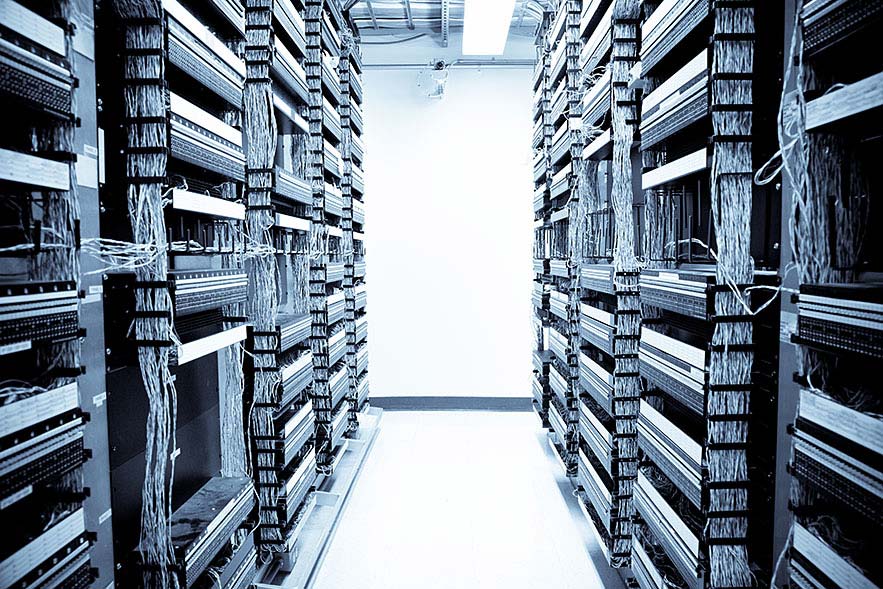The Raritan Blog
Home » Raritan Blog » ASHRAE 90.4: A more sophisticated standard
ASHRAE 90.4: A more sophisticated standard
Nicolas Sagnes
January 25, 2017

In September of 2016, the American Society of Heating, Refrigerating, and Air-Conditioning Engineers (ASHRAE) published a new and improved standard that establishes the minimum energy efficiency requirements for data centers.
ASHRAE 90.4-2016 has been in development for several years. Overall, this new standard contains recommendations for the design, construction, operation, and maintenance of data centers. Additionally, this standard focuses on the use of both on-site and off-site renewable energy.
This standard explicitly addresses the unique energy requirements of data centers in opposition to standard buildings, thus integrating the more critical aspects and risks surrounding the operation of data centers.
What is New?
Standard 90.4 is a performance-based design standard that offers numerous design components for the mechanical load (MLC) and electrical loss (ELC). After determining the calculations of both the MLC and ELC, these calculations are compared to the maximum allowable values based on climate zones. Compliance with Standard 90.4 is achieved when the calculated values do not exceed the values contained in the standard. An alternative compliance path is provided to allow tradeoffs between the MLC and ELC.
The absence of PUE in 90.4 allows the primary focus to be on energy consumption, rather than efficiency.
PUE, as a simpler metric, represents efficiency. It allows data center operators to measure the effectiveness of the power and cooling systems over time. However, PUE is quite limited, as it measures only the relative difference between power consumed on IT equipment, and the energy consumed on IT and infrastructure combined. PUE isn’t a useful tool for determining whether or not the overall energy consumption was increased at the facility level.
ASHRAE 90.4 intends to tackle and regulate lower performers while being mindful of geographic areas. The new standard aims to impact power utilization as a whole throughout a data center facility, highlighting the impact of raising the temperature into the white space on overall energy consumption.
Another key part of this standard is containment. Containment looks closely at the homogeneity of a given air volume across a data center, therefore limiting the power loads necessary to overcome hotspots.
How Raritan helps?
As a key player in the most advanced data center efficiency and management practices, Raritan is allowing end users across the largest facilities to leverage the granular capabilities of our PX Intelligent Power Distribution Units to centralize key environmental metrics at the rack and device levels.
Outlet level metering in conjunction with temperature and humidity sensors is useful in determining whether or not the IT equipment is drawing more power. This is typically caused by a fan accelerating due to a potential rise in temperature.
Creating links between causes and effects across the data center allows Raritan PX users to comply with ASHRAE 90.4. Users get a clear picture of the containment (or lack thereof), as well as the effect airflow, has on the power chain at a granular level.
Leveraging this data ultimately gives PX users the ability to make insightful decisions about implementing more efficient containment solutions with Legrand, and urges users to take action with more effective cooling policies and load balancing across facilities.
Learn more about the PX series of intelligent PDUs for your data center, and let us know if you have any questions or comments.
Other Blog Posts
- The Rapid Growth of AI and the Use of Raritan PDUs to Meet Higher Power Demands
- Posted on October 11, 2023
- Data Center Report Fewer Outages, But Downtime Still Costly
- Posted on September 20, 2023
- Survey: Energy Usage and Staffing Shortages Challenge Data Centers
- Posted on September 20, 2023
- Raritan Secure Switch: Secure NIAP 4.0 Compliant Desktop KVM
- Posted on September 20, 2023
- The Midwest is a Hot Market for Data Centers: How the New Generation of Intelligent Rack PDUs Can Save Cloud Giants Uptime and Money
- Posted on September 7, 2023
Subscribe
Upcoming Events
- AFCOM Data Center World
- April 15 – 18 • Walter E Washington Convention Center - Washington, DC
- Advancing Data Center Construction West 2024
- May 6 – 8 • Salt Lake City, UT
- Net Zero Data Center
- May 16 – 17 • Dallas, TX
- 7x24 Exchange Spring
- June 9th • JW Marriott Orlando Grande Lakes
Latest Raritan News
- Legrand Certifications and Process Controls Provide Confidence in Information Security for Network-Connected Devices in Data-Related Applications
- Posted on April 1, 2024
- Legrand Releases Version 4.0 of Raritan’s Industry-Leading Secure KVM Switches, Raising Bar for Secure Desktop Access
- Posted on July 31, 2023
- Legrand Revitalizes Data Center Sector with Two Revolutionary Intelligent Rack PDUs
- Posted on May 1, 2023
- Raritan Reveals The MasterConsole® Digital Dual KVM Switch
- Posted on February 18, 2021
- Legrand Data, Power and Control Division Announced as Finalist in Six Categories at DCS Awards 2020
- Posted on November 9, 2020